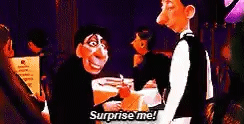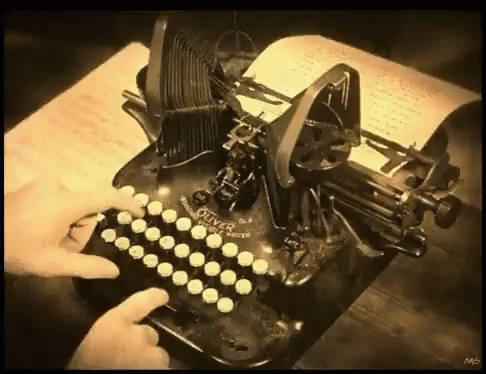Does the travel media have a women problem?
We look at the gender pay gap and we what can be done to tackle inequality
Early last month, Victoria Walker, a former senior travel reporter for The Points Guy in New York, went viral when she penned a series of tweets informing her followers of how much she earned in her last role and what salary prospective candidates should request if they were offered the job.

Across the UK, jaws collectively dropped as we learned it was possible to earn $107,000 dollars (around £82,000) as a travel journalist. Being reminded that you can make bank in this industry was something I suspect most of us needed to hear after a lean few years. But the tweet served a wider purpose, spawning article after article celebrating Walker’s transparency and how crucial and powerful rate sharing is for the collective good of writers across the industry.
When Lottie and I started this newsletter, our main aim was to demystify the travel media; and no part of this industry needs demystifying more than pay. Last week we shared a bumper list of contributor guidelines from some of the biggest titles in travel media but even some of the companies who have taken this very step to make their commissioning processes more transparent continue the foggy practice of not disclosing rates.
Want to know what travel writers earn? Read our financial transparency series from January 2022
It’s not just freelancers who don’t have much of a clue what they can hope to be paid when they invest energy and brainpower into pitching a new publication, though; it’s nigh-on impossible to know what you can expect to earn from an in-house job in the travel media. Job posting after job posting fails to divulge salaries: this Deputy Travel Editor role at the i offers a stunningly vague “competitive with great benefits” in lieu of cold, hard figures, while in this job as Features Writer at loveFOOD.com you can expect a “competitive salary dependent on experience, plus a discretionary performance-based bonus scheme and excellent benefits,” whatever that might actually entail.
On today, International Women’s Day, this choice to avoid disclosing rates is even more pernicious. The Office for National Statistics (ONS) has identified that an 11.1% pay gap exists between female and male journalists. Let’s put that into perspective: for every £1 a male journalist earns, their female colleague will make just 89 pence. In even starker terms, for women to find income parity with men in the industry, we would need to work 40.5 additional days per year.
It’s distressing reading, but the even broader problem lies in the fact that I have absolutely no idea how accurate these figures are. Data from the ONS is only collected from organisations with over 250 employees, so the data I’m citing is not representative of freelance journalists. Worse still, cross-industry research by the IPSE (the Association of Independent Professionals and the Self-Employed) found that the gender pay gap amongst the self-employed is vastly bigger than what you find in employed media.
In fact, self-employed men charge an average of 43% more than women, a situation they put down to “women undervaluing their services and charging a lower day rate.” For our industry, this means that for every £1 male writers earn, a woman may well have instead settled for 70 pence. This adds up quickly; over just one month, this could mean the difference in earning £3,496 rather than £5,000.
Recognising why women accept the status quo is important. Fellow journalist and expert on the financials of freelancing, Anna-Codrea-Rado, doesn’t mince her words when she points out that “there are cultural and social reasons which teach us to believe we’re less worthy of higher pay than men.”
Finding the tools to be better advocates for ourselves and our bank accounts is certainly a crucial means of beginning to address the gender pay gap. However, the most insidious problem about the gender pay gap is that you wouldn’t know it existed unless you’d had an entirely non-characteristically British discussion about earnings or had seen a tweet like Walker’s. But a study in 2020 found that pay transparency can help to address the gender pay gap by up to 40%, as it can encourage conversations about earnings and give the lower-paid the confidence to ask for more.
Writing this newsletter, I realised how challenging it is to track down data about our industry. One of the best data sets I found was started by Codrea-Rado in 2020, when she asked journalists writing for English-speaking publications to share the rates they received. To date, the #FreelancerPayGap campaign has received 852 entries and shows a 9% pay gap for journalists writing for US-based publications: on average, men earned $0.45 per word, against $0.41 per word for women and $0.34 per word for non-binary writers (although the sample size for the latter was just five entries, so I’m hesitant to draw conclusions from such a small data set). For UK publications, men and women received an average of £0.26 per word apiece.
While this provides us with some food for thought, 78% of entries into this spreadsheet are from people identifying as women, and, from those who submitted information about UK titles, there were just 126 identifying as male. Is this reflective of the proportion of male writers in the industry? Probably not. Data from 2020 suggests that women make up 53% of journalists and, anecdotally, I suspect that number is significantly higher when it comes to the travel media.
Incomplete data leads to incomplete analysis and the lack of concrete information pertaining to our industry only serves to keep us all in the dark. How can we know what it’s realistic to earn and how much we can push back against rates during the commissioning process if we don’t know where the ceiling lies?
It’s for this reason that we’re issuing a call to arms amongst our community. Transparency can close the pay gap, but it needs to come not just from women, but from our male colleagues, too. We can work together to push for parity of pay in the travel media: to do this, join us in adding to the #FreelancerPayGap spreadsheet using this form or tweet using the #FreelancerPayGap and help us all to know where we stand.
Call for pitches: Nat Geo USA


Travel Media Awards open for entries
The sexiest awards ceremony in the industry is open for entries until September 2022. Trawl your portfolios and enter one of the categories in this year’s Travel Media Awards.
VisitEngland’s Travel Content Award open for entries
The following is copied from a press release. For more information, email press@visitiengland.org. Deadline 31 March 2022.
The annual VisitEngland Awards for Excellence are now open for nominations for the category of Travel Content Award, which recognises the important contribution that media and influencers make in championing the huge array of amazing tourism experiences on offer in England.
This year judges are particularly interested to see submissions of features/blogs/vlogs that bring to life the VisitEngland Escape the Everyday campaign ethos, which first launched back in 2020 and aims to encourage people to take domestic day trips and overnight stays once again, embracing new experiences or destinations across the country.
In line with inspiring the nation to travel again, content that highlights the idea of feeling excited (e.g. unmissable events taking place in cities), feeling good (responsible travel experiences), feeling connected (fun and engaging experiences to reignite relationships with friends and family) will be favoured.
The nominations close on 31st March 2022 and shortlisted entries will be put forward to a judging panel in April, with the finalists notified soon afterwards. A Gold, Silver and Bronze winner will be announced at the VisitEngland Awards for Excellence event in June 2022.
Conditions of Entry:
The award is open to travel writers, broadcasters, vloggers and bloggers
We are looking for an article or blog of 500 words or more, or TV, radio or vlog content of more than two minutes, that champions breaks and travel experiences in England. Content can be an England series, a destination feature or a round-up.
Please email a link to or colour scan of your/your colleague’s travel piece to press@visitengland.org
All entries must be the original work of the entrant and must have been published in the UK between 1 January 2021 and 31 March 2022. If a broadcast entry does not appear under the entrant’s name, confirmation should be included from the programme producer that the entrant is entitled to claim the feature as their own work
Please give your details in the body of the email (name, title, email address and telephone number), along with the publication’s details (name, circulation and date of publication)
Deadline for entries - 17.00; 31 March 2022
Tweet of the week


Who to follow
The excellent Laura Jackson, current editor of loveEXPLORING and loveFOOD, is moving to The Times’ travel desk this month to take up a Commissioning Editor position. We hope to run an interview with her in the coming months, but for now, give her a follow on Twitter.


Industry must-reads
“Despite apocalyptic warnings, in fact, guidebooks are generally doing okay.” This is music to our ears in this WaPo piece by Jen Rose Smith, who has investigated the evolution of the guidebook from a practical travel bible to a pre-trip planning resource used in conjunction with the internet. This seems like a good time to remind you that Steph’s Moon Chile guidebook came out during the pandemic, and Lottie’s new dog-friendly travel book is out in May!
Sian Meades-Williams’ freelance writer’s bible, The Pyjama Myth, has hit bookshops this month. Lottie’s only read five pages but she’s already learned LOADS about how she can be a better freelancer. It is genuinely an essential resource.
And finally, the brilliant travel writer Shafik Meghji has a book out on 15 March. Crossed Off The Map is a fascinating portrait of Bolivia with a side of armchair travel. Lottie has long been a fan of Shafik’s work and commissioned countless stories from him during her time at Rough Guides, so she reckons this is going to be an absolute corker.
This is the first in our series of newsletters celebrating International Women’s Day and supporting our female colleagues in earning higher, more equitable rates. Subscribe to read:
March 15 - How to advocate for your female colleagues and how men can better write for female audiences
March 22 - How to advocate for yourself as a female writer, including negotiating rates and dealing with being patronised
March 29 - How to make maternity and paternity leave work for you as a freelancer





While I have no doubt that women are unfairly paid less than men, it is important - for the sake of an informed debate - that we do not misrepresent the figures. I would suggest that your paragraph below does just that. So, if men charge 43% more than women, and women charge 57 pence, then men would surely receive 81.5 pence, not £1. And over a month, if a woman earns £2850, and men charge 43% more, then men would surely earn £4075.50, not £5000? (Or, if a man earns £5000, then a woman would earn £3496). Still not fair, but it's a significant difference.
In fact, self-employed men charge an average of 43% more than women, a situation they put down to “women undervaluing their services and charging a lower day rate.” For our industry, this means that for every £1 male writers earn, a woman may well have instead settled for 57 pence. This adds up quickly; over just one month, this could mean the difference in earning £2,850 rather than £5,000.